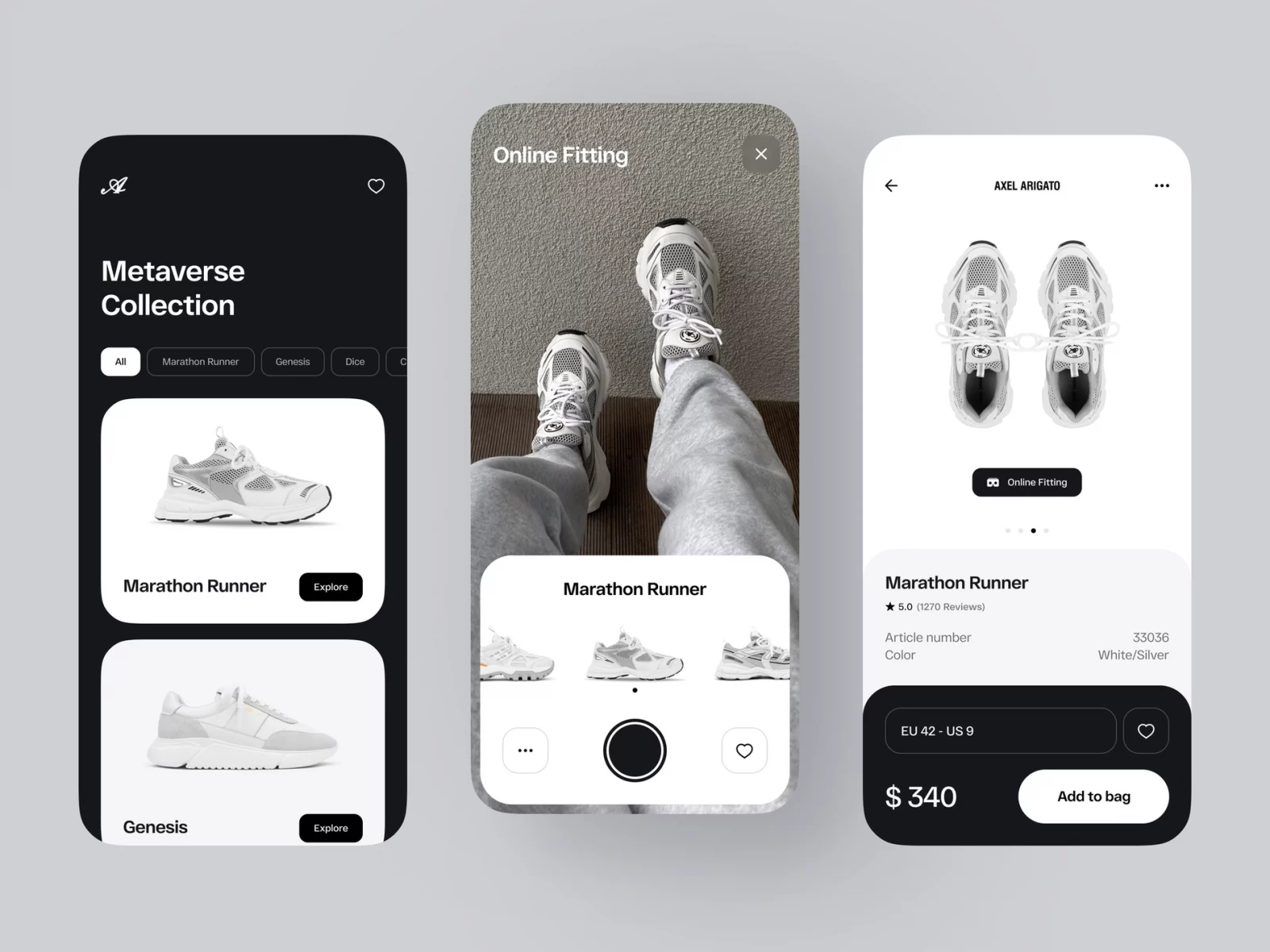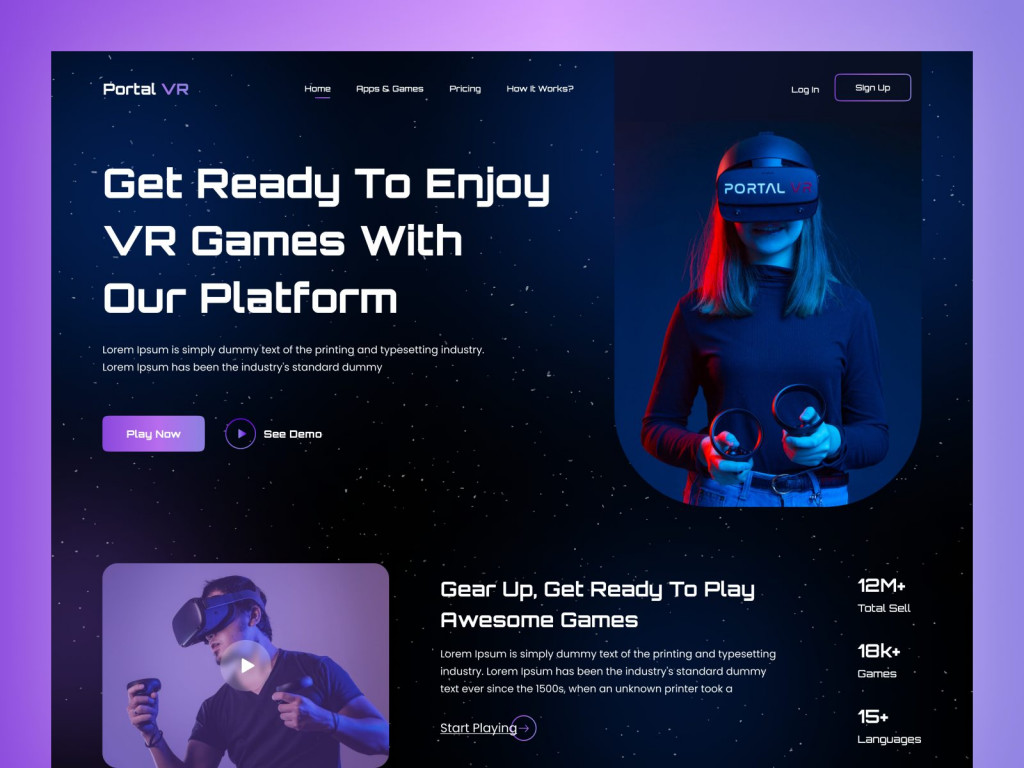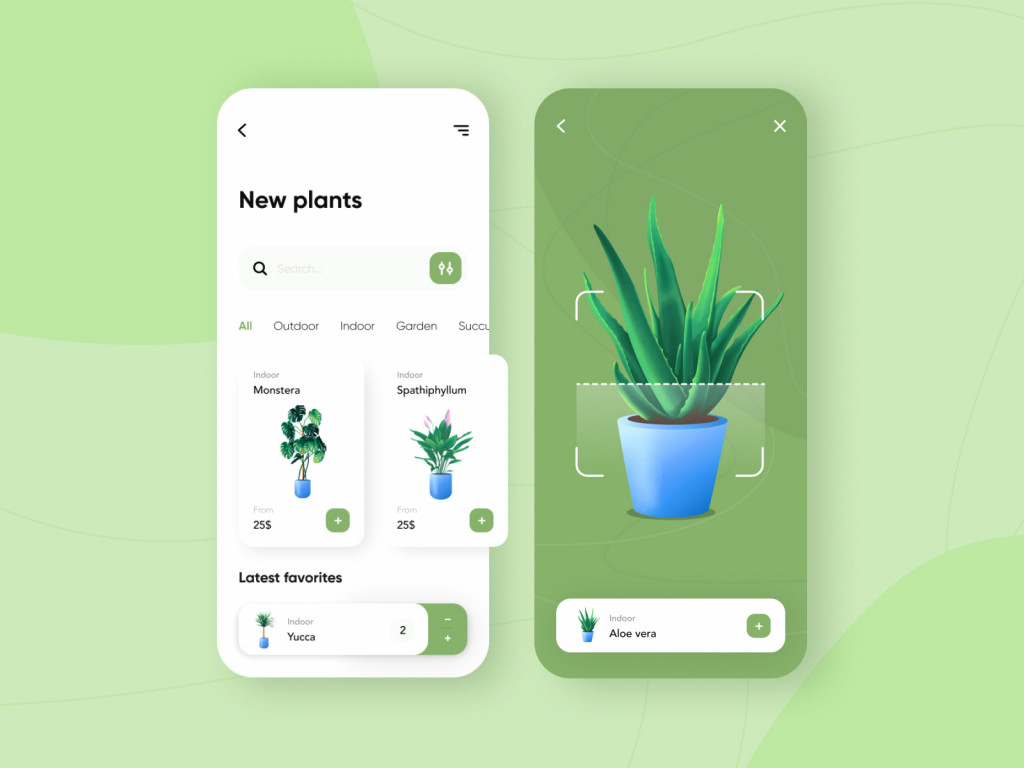Virtual reality and augmented reality are two emerging technologies that have gained considerable traction in recent years. VR provides users with a fully immersive digital experience, while AR overlays digital elements in the real world. Both VR and AR have vast potential to transform various industries, ranging from gaming to healthcare.
Contents:
However, for startups, it can be challenging to monetize VR/AR products. This article will explore strategies for startups to monetize their virtual and augmented reality products successfully.
Understanding the Virtual and Augmented Reality Market
Before diving into strategies for monetizing VR/AR products, it’s essential to understand the current state of the market.
Based on Statista‘s research, the AR & VR market in 2023 is projected to generate a staggering US$31.12 billion in revenue, with an annual growth rate (CAGR 2023-2027) of 13.72%. This growth trajectory is expected to culminate in a market volume of approximately US$52.05 billion by 2027. Notably, the COVID-19 pandemic has expedited the adoption of VR/AR technologies, as more individuals have begun to work and socialize remotely.
Some of the key players in the VR/AR industry include Facebook (Oculus), HTC (Vive), Microsoft (HoloLens), and Sony (PlayStation VR).
Monetizing Your Virtual and Augmented Reality Product
VR and AR technologies are becoming increasingly popular in today’s world. These technologies offer users immersive and interactive experiences that were previously unimaginable. As more businesses are looking to capitalize on this trend, monetizing VR/AR products has become a crucial aspect of success in the industry. In this section of the article, we will discuss the essential steps that startups can take to monetize their VR/AR products, including product development, marketing, business models, and finally revenue streams.
Product Development
The first step in monetizing your VR/AR product is to ensure that it provides a unique and valuable experience for users. This can be achieved by focusing on user experience and incorporating feedback from beta testers. Make sure your product stands out from the competition by offering innovative features and immersive UI/UX designs that your customers cannot find anywhere else.
Marketing
Developing a robust marketing strategy is crucial for successfully monetizing a VR/AR product. This can include leveraging social media, influencer marketing, and content marketing to raise awareness and generate interest in the product. Create engaging and informative content to showcase your product’s capabilities and benefits to potential customers.

Axel Arigato Virtual fitting app concept by Conceptzilla
Business Models
There are several business models that startups can use to monetize their VR/AR products. These include:
- Subscription model: Users pay a monthly fee to access the product or service.
- Pay-per-download: Users pay a one-time fee to download the product.
- In-app purchases: Users pay for additional features or content within the app.
Choose the business model that works best for your product and target audience. Consider offering different pricing tiers or packages to cater to a broader range of customers.
Revenue Streams
Apart from the business models mentioned above, there are several other ways to generate revenue from VR/AR products. These include:
- Advertising: Integrating ads into the product can generate revenue. However, make sure they do not interfere with the user experience.
- Sponsorship: Partnering with other companies to promote their products or services can generate revenue.
- Partnerships: Collaborating with other VR/AR developers to create new products or services can generate revenue.
Diversifying your revenue streams can help you increase your earnings and mitigate risks.
Monetizing a VR/AR product requires a comprehensive strategy that incorporates product development, marketing, and revenue streams. By focusing on providing a unique and valuable experience for users, startups can successfully monetize their VR & AR products. Remember to stay on top of new trends and technologies to remain competitive in the constantly evolving VR/AR market.

VR Gaming Website by Jawad
Monetization Strategies for Virtual and Augmented Reality Products
Such products have become incredibly popular and have transformed the way we interact with digital content. However, developing and monetizing a VR/AR product can be challenging. This section explores various monetization strategies, including the freemium model, in-app purchases, subscription model, sponsorship and advertising, hardware sales, and virtual real estate.
Freemium Model
The freemium model involves offering a basic version of the product for free, with limited features or content, and a premium version for a fee, with additional features or content. This strategy allows startups to build a user base quickly and generate revenue from a small percentage of paying customers. However, the balance between the free and premium versions’ features must be managed carefully to avoid devaluing the premium version or making the free version too basic. Examples of successful VR/AR products using the freemium model include Pokemon Go and Rec Room.
In-App Purchases
In-app purchases involve offering virtual items or content for purchase within the app. This strategy provides a steady stream of revenue from a small percentage of paying customers. However, some users may perceive it as a pay-to-win model, and others may feel that they are being nickel-and-dimed for additional content. Examples of successful VR/AR products using in-app purchases include Beat Saber and Job Simulator.
Subscription Model
The subscription model involves offering access to a product for a recurring fee. It provides a steady stream of revenue and incentivizes users to continue using the product. However, users may be hesitant to commit to a recurring fee, and startups must continually provide value to justify the fee. Examples of successful VR/AR products using the subscription model include VRChat and Supernatural.
Sponsorship and Advertising
Sponsorship and advertising involve partnering with brands to promote their products within the VR/AR product, which is a great opportunity to showcase their brand identity. This strategy provides a significant revenue stream without relying on user purchases. However, it can be intrusive and disrupt the user experience. Startups must be careful to align with brands that align with their product and user base. Examples of successful VR/AR products using sponsorship and advertising include Jurassic World: Blue and Ghostbusters World.
Hardware Sales
Hardware sales involve selling VR/AR hardware, such as headsets or controllers. This strategy provides a significant revenue stream, and the hardware can be used to showcase the VR/AR product. However, this strategy is more suitable for established companies with a large customer base and a strong brand reputation. Oculus is an example of a company that uses hardware sales as a monetization strategy.
Virtual Real Estate
Virtual real estate involves selling virtual land, buildings, or other virtual real estates in VR/AR products. This strategy is beneficial for companies looking to provide a more immersive experience for their users while generating revenue. However, this strategy may not be suitable for all VR/AR products, and it requires a significant investment in the development of virtual real estate. Decentraland is an example of a company that uses virtual real estate as a monetization strategy.
Monetizing VR/AR products can be challenging, but with the right strategy, startups can generate significant revenue streams. The freemium model, in-app purchases, subscription model, sponsorship and advertising, hardware sales, and virtual real estate are all viable options. Startups should choose a monetization strategy that aligns with their product development, marketing, and business models while providing an optimal user experience.

Plant shop – Mobile App by Anastasia Golovko
Best Practices for Monetizing Virtual and Augmented Reality Products
VR and AR products have enormous potential for monetization, and their popularity is on the rise. To make the most of this opportunity, it is essential to prioritize the customer experience while balancing monetization and user engagement. Here are some best practices to follow when monetizing VR and AR products.
Importance of Customer Experience
Providing an immersive and enjoyable experience is vital for attracting and retaining customers. However, intrusive ads and paywalls can disrupt the user’s flow and compromise their experience. To avoid this, businesses should offer a free trial or demo version of the product to help users understand its value. They can also consider providing relevant and non-intrusive advertisements to generate revenue without disrupting the user experience.
Balancing Monetization and User Engagement
Finding the right balance between monetization and user engagement is crucial to retaining users and ensuring customer satisfaction. A variety of monetization strategies, such as in-app purchases, subscriptions, or a one-time fee for the full version, can be effective. Additionally, providing users with the option to watch advertisements for in-game currency or other rewards can also be a successful monetization strategy that does not interrupt the user’s engagement with the product.
Utilizing Analytics to Optimize Monetization Strategies
Analyzing user behavior and engagement with VR and AR products can provide valuable insights into optimizing monetization strategies. Businesses can use this data to identify areas for additional monetization opportunities, optimize their pricing strategies, and identify the most effective channels for advertising and promotions. Analyzing user feedback can also help businesses tailor their products to better meet user needs.
Staying Up-to-Date with Industry Trends and Changes
Staying informed and up-to-date with the latest industry trends and changes is essential for monetizing VR and AR products effectively. Businesses can achieve this by following industry publications, attending conferences and webinars, and networking with other professionals in the industry. By staying ahead of the competition, businesses can identify new monetization opportunities and create a profitable and sustainable business model that benefits both the business and its customers.
Conclusion
In conclusion, the market for Virtual Reality and Augmented Reality products is projected to grow significantly in the coming years. Monetizing VR/AR products for startups requires a comprehensive strategy that incorporates product development, marketing, and revenue streams. By focusing on providing a unique and valuable experience for users, startups can successfully monetize their virtual and augmented reality products. Diversifying revenue streams and staying on top of new trends and technologies is crucial to remain competitive in the constantly evolving VR/AR market. As the market continues to grow, startups need to implement these monetization strategies to maximize their earning potential and become successful players in the industry.
Do you want to develop an app or website for your business? Contact us, and let’s build an innovative product together!
